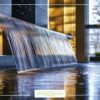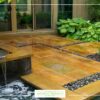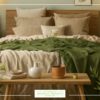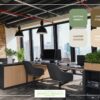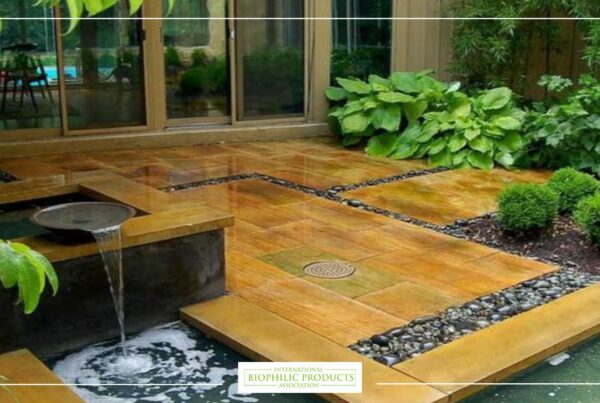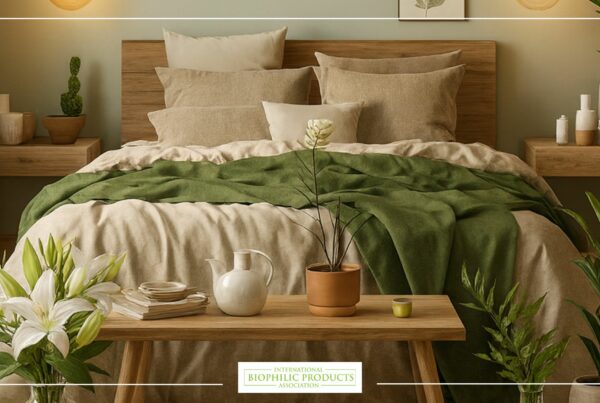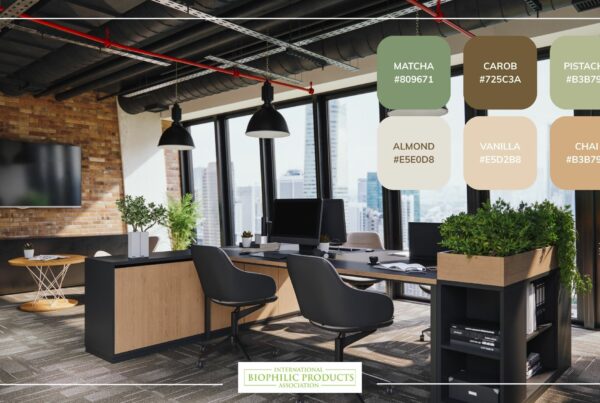Few sensory experiences are as universally soothing as the gentle trickle of a stream or the rhythmic crash of waves. Biophilic design, a practice that integrates natural elements into the built environment, recognises the power of water sounds to calm our minds and enrich our spaces. By incorporating waterfalls, fountains and other aquatic features into interiors, designers create environments that reduce stress, support focus and encourage restorative sleep. This article explores the science behind water acoustics, offers guidance for integrating water features into biophilic interior design and highlights the many benefits of these relaxing soundscapes.
Why water sounds resonate with us
Our affinity for water is deeply rooted in human evolution. As hunter‑gatherers, early humans relied on lakes, rivers and streams for survival; the sounds of flowing water signalled the presence of food, fresh water and vegetation. Hearing these sounds triggered a sense of safety and abundance. Modern research suggests that exposure to water sounds still produces a calming effect by engaging our sensory system in a predictable, non‑threatening manner. The Headlight Health article on blue spaces notes that being near water, even virtually, promotes relaxation and lowers stress. The sights, sounds and smells of water create a unique sensory experience that encourages mindfulness and introspection.
Water sounds also contribute to what psychologists call “soft fascination,” a state of relaxed focus where the mind can wander without feeling overstimulated. Unlike abrupt noises that activate our threat response, predictable and rhythmic sounds, such as rain or waves, help quiet the brain’s vigilance system. The Headlight article explains that water’s dynamic yet gentle qualities invite contemplation and evoke a sense of awe. This explains why many people use water sounds for sleeping or meditation; the soundscape provides just enough sensory input to hold our attention while allowing mental recovery.
Biophilic design and the presence of water
Biophilic design draws on our evolutionary bond with nature to foster wellbeing in the built environment. One of the 14 patterns of biophilic design, known as Presence of Water, emphasises the sensory richness that water brings to a space. The pattern describes conditions that enhance the experience of a place through the seeing, hearing or touching of water. It notes that fluidity, sound, lighting and accessibility determine whether a water feature feels calming or stimulating. Practical examples include water walls, fountains and aquariums. Even paintings of ocean life or the colour blue can evoke the presence of water, though real water provides more profound benefits.
Designers leverage the presence of water to create multisensory experiences. A small indoor fountain near a seating area invites visitors to pause and listen; a cascading waterfall in a lobby draws the eye and ear upward, enhancing the perception of height and openness. Incorporating water features into office design can reduce background noise and provide a natural acoustic buffer, making open‑plan workspaces more comfortable. When paired with plants and natural light, water elements reinforce the connection to the outdoors and contribute to a sense of place.
The science behind relaxing water sounds
Water sounds affect the brain in several ways. Studies have found that listening to natural sounds decreases the body’s stress responses by lowering heart rate and cortisol levels. The consistency and frequency range of water sounds mask disruptive noises, creating a stable auditory environment. Because water sounds are non‑linguistic, they do not interfere with cognitive processes; instead, they promote a meditative state that is conducive to creativity and problem solving.
Neuroscientists classify water sounds as broadband noise, meaning they contain a wide range of frequencies. This broad spectrum helps drown out sudden or repetitive noises, which might otherwise distract or irritate. The constant yet varied sound profile provides a gentle auditory backdrop that supports concentration. Water sounds also encourage deep breathing and heart rate regulation, mirroring the natural rhythms of the ocean or a river.
Incorporating water sounds into biophilic interior design
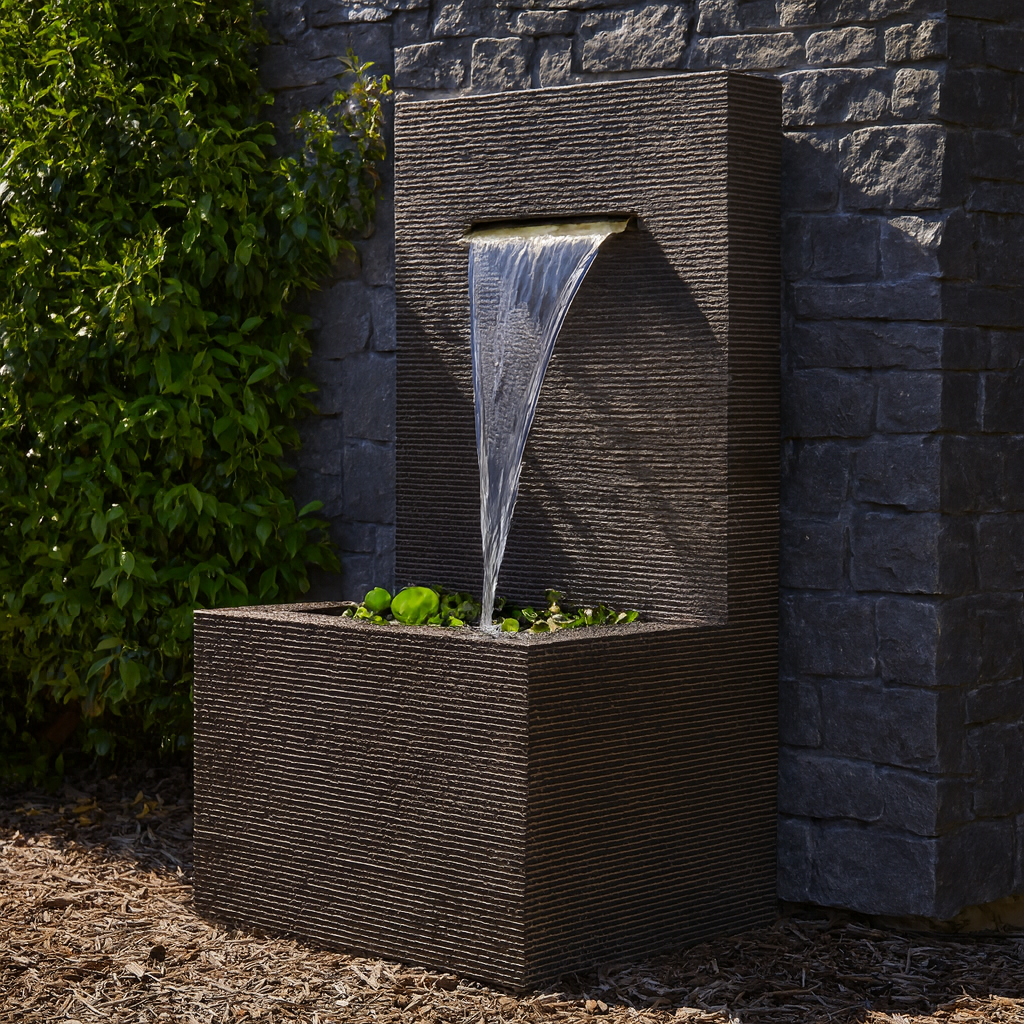
There are multiple ways to integrate water sounds into a biophilic design scheme. The appropriate choice depends on the scale of the project, budget and desired ambience. Below are several strategies for adding relaxing water sounds to homes, offices and public spaces.
Water fountains and waterfalls
Indoor fountains are among the most popular features for biophilic interiors. Freestanding or wall‑mounted fountains add movement and sound, often becoming focal points in lobbies or lounges. For larger spaces, cascading waterfalls can create dramatic visual statements and mask ambient noise. When designing a water wall, ensure that water flows smoothly to avoid splashing, and consider adjustable flow rates to fine-tune the sound level.
Water fountain sounds are particularly effective in reception areas, meditation rooms and relaxation zones. They convey a sense of tranquility and invite occupants to slow down. In office environments, smaller table‑top fountains can provide personal relaxation for workers, adding a natural sound element to individual workstations.
Streams and ponds
For larger projects, such as corporate campuses or wellness centres, integrating indoor streams or ponds can significantly enhance the biophilic quality. A shallow stream meandering through a lobby or courtyard introduces gentle gurgling sounds that invite exploration. A koi pond offers visual interest alongside the soft splash of water. These features encourage people to gather and interact, fostering community and connection.
Maintenance and safety are paramount when designing interior water bodies. Filtration systems keep water clear and fresh, while shallow depths reduce drowning risks. Designers should also use non‑slip materials around water features and implement child‑friendly safeguards where necessary.
Water sound machines and digital acoustics
When architectural water features are impractical, digital solutions can still deliver the benefits of water acoustics. Portable sound machines or smartphone applications produce recordings of rain, ocean waves or babbling brooks. These devices are commonly used as water sounds for sleeping, masking intrusive noises and promoting deeper rest. In work environments, curated soundscapes played through speakers can create a calming ambience without the cost or maintenance of physical water features.
While digital water sounds lack the visual and tactile elements of real water, they still provide auditory relief. To maximise their effect, pair sound machines with visual cues, such as artwork depicting water, or position them near indoor plants. Using high‑quality recordings ensures a realistic and immersive experience.
Rain gardens and green roofs
Incorporating water into landscapes around buildings can enhance the biophilic experience inside. Rain gardens capture and channel stormwater, creating seasonal streams and wetlands that support local biodiversity. Green roofs often include ponds or shallow basins that collect rainwater and provide habitat for birds and insects. When windows overlook these features, occupants benefit from both the sights and sounds of water, fostering a sense of connection to the wider ecosystem.
Benefits of relaxing water sounds
Adding water sounds to a space yields a range of psychological, physiological and cognitive benefits:
- Stress reduction: Water sounds promote relaxation by masking sudden or harsh noises and engaging the parasympathetic nervous system. Listening to the gentle flow of water can lower heart rate and blood pressure.
- Improved sleep: Many people use water sound effect recordings to fall asleep. The consistent rhythms of rain or waves help quiet racing thoughts and support longer periods of deep sleep.
- Enhanced focus: In work environments, water sounds improve concentration by providing a stable auditory backdrop. This “white noise” effect reduces distractions and supports sustained attention.
- Mood elevation: Relaxing water sounds evoke positive emotions, including awe and gratitude. They encourage mindfulness and a sense of being present in the moment.
- Connection to nature: Incorporating water sounds into interiors reinforces a biophilic connection, reminding occupants of natural ecosystems and seasonal cycles.
Biophilic office design: water’s role in workspaces
In offices, water features do more than decorate; they contribute to employee wellbeing. As noted, many office workers feel their environment lacks support for their wellbeing, with a significant proportion citing the absence of greenery and natural elements. Biophilic design addresses these concerns by bringing nature indoors. When water features are introduced into an office, they soften the environment and create a sensory balance with plants and natural light.
For example, a central atrium might include a reflecting pool surrounded by seating. The gentle lapping of water encourages informal meetings and conversation. Alternatively, individual work pods could incorporate small fountains to provide private relaxation. The result is a workplace that supports mental clarity, reduces stress and encourages creative thinking. This aligns with research that links biophilic environments to improved emotional states and inspiration.
Water sounds for sleeping and wellness at home
Beyond offices, water soundscapes are an effective tool for personal wellness. Many people struggle with sleep disturbances due to urban noise or anxiety; water sounds for sleeping offer a simple, natural remedy. Rainfall tracks, gentle streams or ocean waves can mask street noise, regulate breathing and lull the brain into a restful state. To enhance the effect, combine these sounds with other biophilic elements: a bedroom filled with houseplants, soft natural textures and gentle, diffused lighting fosters a cocoon of comfort.
Water sound effect machines are also useful for meditation and yoga practices. They provide a grounding auditory cue that anchors attention and helps practitioners stay present. For people working from home, a desktop fountain or a tabletop water garden can introduce a subtle soundscape that reduces stress and counters screen fatigue.
Design considerations and maintenance
When integrating water features into interior spaces, designers must address practical considerations. Maintenance is perhaps the most significant challenge. Pumps, filters and treatment systems ensure water remains clean and safe; neglect can lead to algae, odors or mechanical issues. Regular upkeep should be part of the facility management plan.
Acoustics also require careful planning. The sound of water should be audible enough to have a calming effect but not so loud that it becomes intrusive. Adjustable flow rates, strategic placement and sound‑absorbing materials help fine-tune the acoustics. In multi‑use spaces, consider remote controls or timers to adjust water flow based on time of day and occupancy.
Water safety is another consideration, especially in public settings. Shallow basins, textured surfaces and unobtrusive barriers prevent slips and falls. For households with small children or pets, tabletop fountains or wall‑mounted water features reduce risk while providing the same benefits.
Combining water with other sensory elements
Water sounds work best when integrated into a broader biophilic design palette. The interplay of multiple sensory cues creates immersive environments that transport occupants away from urban stress. Combining water with natural light, plants and organic materials reinforces the connection to nature and enhances the restorative effect. For instance, pairing a living wall with a small waterfall creates a lush vertical garden that engages the eye, ear and nose.
Fractal patterns, complex yet familiar forms found in nature, can be incorporated through art or textiles to complement water features. Natural aromatherapy, such as essential oils from trees or herbs, deepens the sensory experience. Together, these elements evoke a multisensory haven that invites calm and creativity.
Sustainability and water use
Biophilic design emphasises sustainability and environmental stewardship. Water features should be designed to minimise waste and energy consumption. Closed‑loop systems recirculate water, reducing the need for constant refilling. Installing rainwater capture systems for fountains or ponds conserves potable water. Solar‑powered pumps and LED lighting further decrease the environmental footprint.
Material selection also plays a role. Using locally sourced stone and reclaimed materials connects the feature to regional ecology and reduces carbon emissions. In outdoor settings, water features can support local wildlife, birds, pollinators and amphibians, creating microhabitats that contribute to urban biodiversity.
Embracing the soothing power of water
The sound of water is a timeless balm for stressed minds and overworked bodies. By weaving water acoustics into biophilic design, architects and interior designers can create spaces that promote relaxation, focus and wellbeing. Research underscores the psychological benefits of being near water, and biophilic patterns highlight how seeing, hearing and touching water enriches our experience of place. Whether through a cascading waterfall in a corporate lobby, a tabletop fountain in a home office or a digital soundscape played while drifting off to sleep, the soothing voice of water invites us to slow down and connect with nature.
As urbanisation continues and digital distractions multiply, the need for restorative environments grows. Implementing biophilic principles, especially those that harness the calming influence of water, can transform everyday spaces into sanctuaries of calm. By doing so, we honour our deep evolutionary ties to blue spaces and ensure that our built environments support the health and happiness of all who inhabit them.


